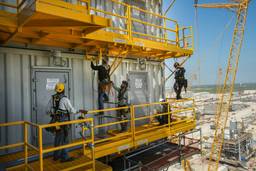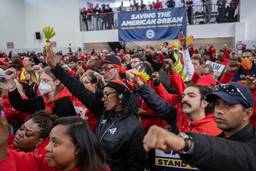
So the unemployment rate’s drop last month means we’re heading out of this tunnel, right? If only it were as simple as that.
There’s more to the nation’s unemployment situation than December’s decline to 8.5 percent joblessness. The fact is, the economy we live in today has become far too complex to be measured the same way we do when we step on a scale.
That’s because a number of forces have changed the workplace reality for American workers. Some of these are short-term changes, though even then, it’s not clear how their impact will play out in the long-term. And some are significant long-term changes that first began to take off and which are likely to affect workers for a long time to come.
Young vets’ job woes
Take the worsening job plight of veterans of our wars in Iraq and Afghanistan, something that deserves attention by policymakers. The jobless rate for these vets in December, according to government figures, was 13.1 percent, up from 11.7 percent a year ago.
But the real jobs problem is the one faced by young vets, the ones who have came home looking for new lives rather than staying on in the military. The unemployment rate for these veterans between 20 to 24 years old averaged 30 percent last year, up from 21 percent in July 2010, according to the New York Times.
This may seem to some as a short-term problem, but it has the marking of a dilemma that may linger on.
We have traditionally expected veterans to find their way back into the job market, after slogging through a bout of joblessness. That is not exactly what happened, however, after the Vietnam War, and the mark left from Iraq and Afghanistan may turn out to be an even far more difficult one to overcome.
That is because the physical and psychological scars left on so many who took part in fighting that lasted almost a decade. A large brunt of military service fell upon workers plucked out of their jobs because of their National Guard and Reserve obligations.
So, too, the long-term changes that have rippled across the job market continue to play and broaden in ways not seen a few years ago.
Public service workers lose their protections
The wind carrying blue-collar factory jobs away for unskilled workers blows as strong as ever. Not only have jobs vanished at stunning levels, but also the downward slide in wages and loss of benefits is a worrisome omen for those left behind in the factories.
But now we can begin charting the rapidly expanding downward slide of government jobs, a process that seems likely to roll on for some time from Washington to the state capitals and to local communities, spurred on by budget-minded Republicans and financially desperate Democrats.
One measure of the decline is the loss of state jobs across the U.S.
Employment levels among state workers dropped 1.2 percent in 2011, according to the New York Times. That, according to the newspaper, is the steepest drop since recordkeeping began over 55 years ago.
For a long time, public workers were immune from such severe job cuts as well as attacks on their security. But now that immunity has vanished, putting them in the same downward spin as workers in the private sector.
Many of these public service jobs are held by black and Latino workers and their foothold on the job market has only grown more tenuous lately.
Indeed, the construction industry bust, factory-shutdowns and shrinking wages for most workers have had disastrous results for black and Latino workers. As the Economic Policy Institute has pointed out, the jobless rate for black and Latino workers grew dramatically higher and dramatically apart, as well, from white workers during the last decade.
Combine these forces and you have a job market not only under terrible stress, but facing stresses not seen before. That’s why the good news concerning the joblessness rate leaves the nation only so much to cheer about.
A former labor writer for the Chicago Tribune, Stephen Franklin is a Pulitzer Prize finalist and an adjunct professor at the University of Illinois Urbana-Champaign School of Labor and Employment Relations.







